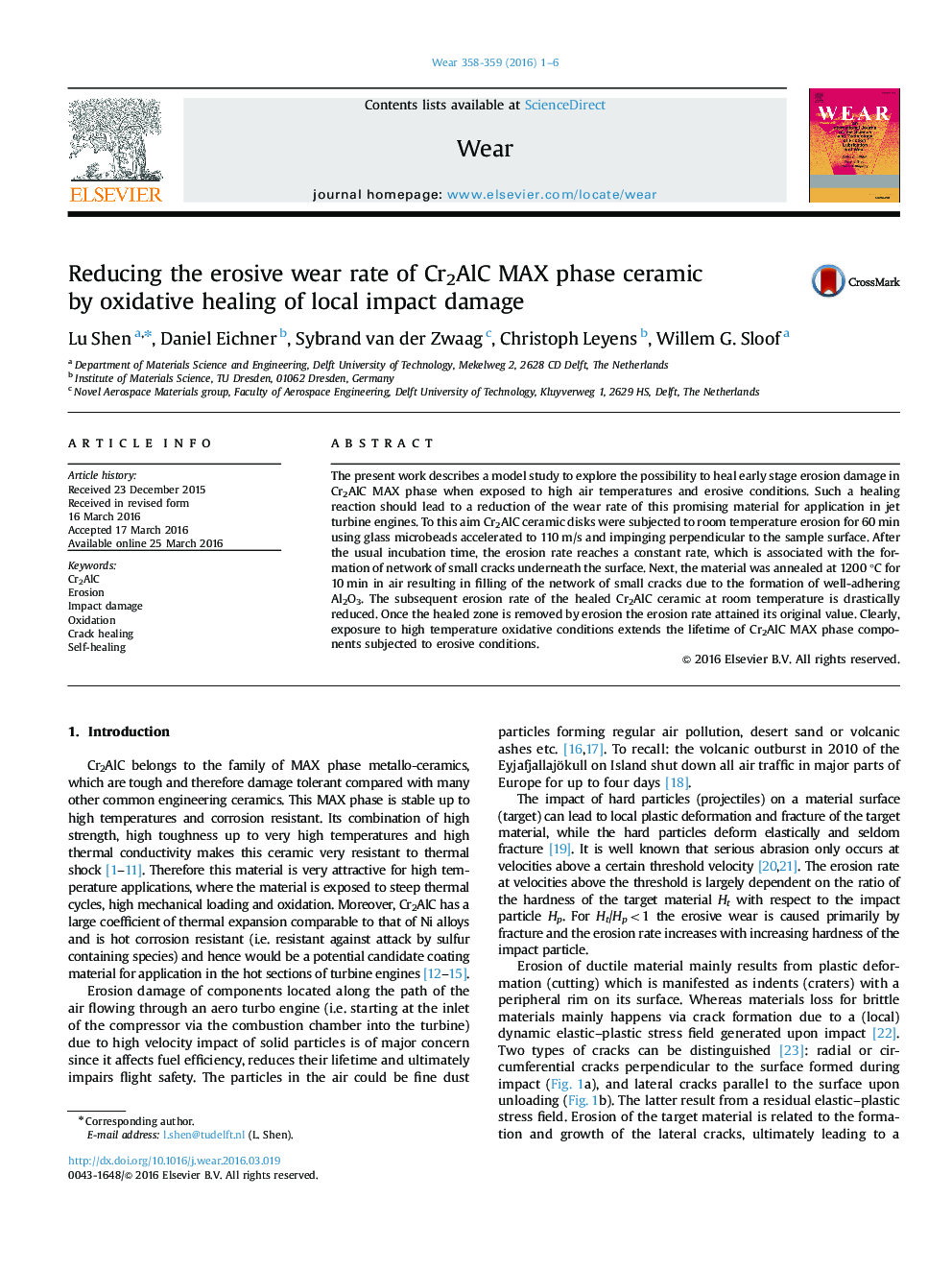| Article ID | Journal | Published Year | Pages | File Type |
|---|---|---|---|---|
| 616888 | Wear | 2016 | 6 Pages |
•Erosion rate of Cr2AlC is linear with erosion time under 110 m/s normal impact.•The erosion induced crack network is about 10 µm thick and 100 nm in crack width.•Oxidation induced healing of erosion damage in Cr2AlC restores material integrity.•The erosion rate of Cr2AlC is retarded after healing treatment at 1200 °C in air.•The concept of reducing erosive wear by oxidative healing of damage is proved.
The present work describes a model study to explore the possibility to heal early stage erosion damage in Cr2AlC MAX phase when exposed to high air temperatures and erosive conditions. Such a healing reaction should lead to a reduction of the wear rate of this promising material for application in jet turbine engines. To this aim Cr2AlC ceramic disks were subjected to room temperature erosion for 60 min using glass microbeads accelerated to 110 m/s and impinging perpendicular to the sample surface. After the usual incubation time, the erosion rate reaches a constant rate, which is associated with the formation of network of small cracks underneath the surface. Next, the material was annealed at 1200 °C for 10 min in air resulting in filling of the network of small cracks due to the formation of well-adhering Al2O3. The subsequent erosion rate of the healed Cr2AlC ceramic at room temperature is drastically reduced. Once the healed zone is removed by erosion the erosion rate attained its original value. Clearly, exposure to high temperature oxidative conditions extends the lifetime of Cr2AlC MAX phase components subjected to erosive conditions.
